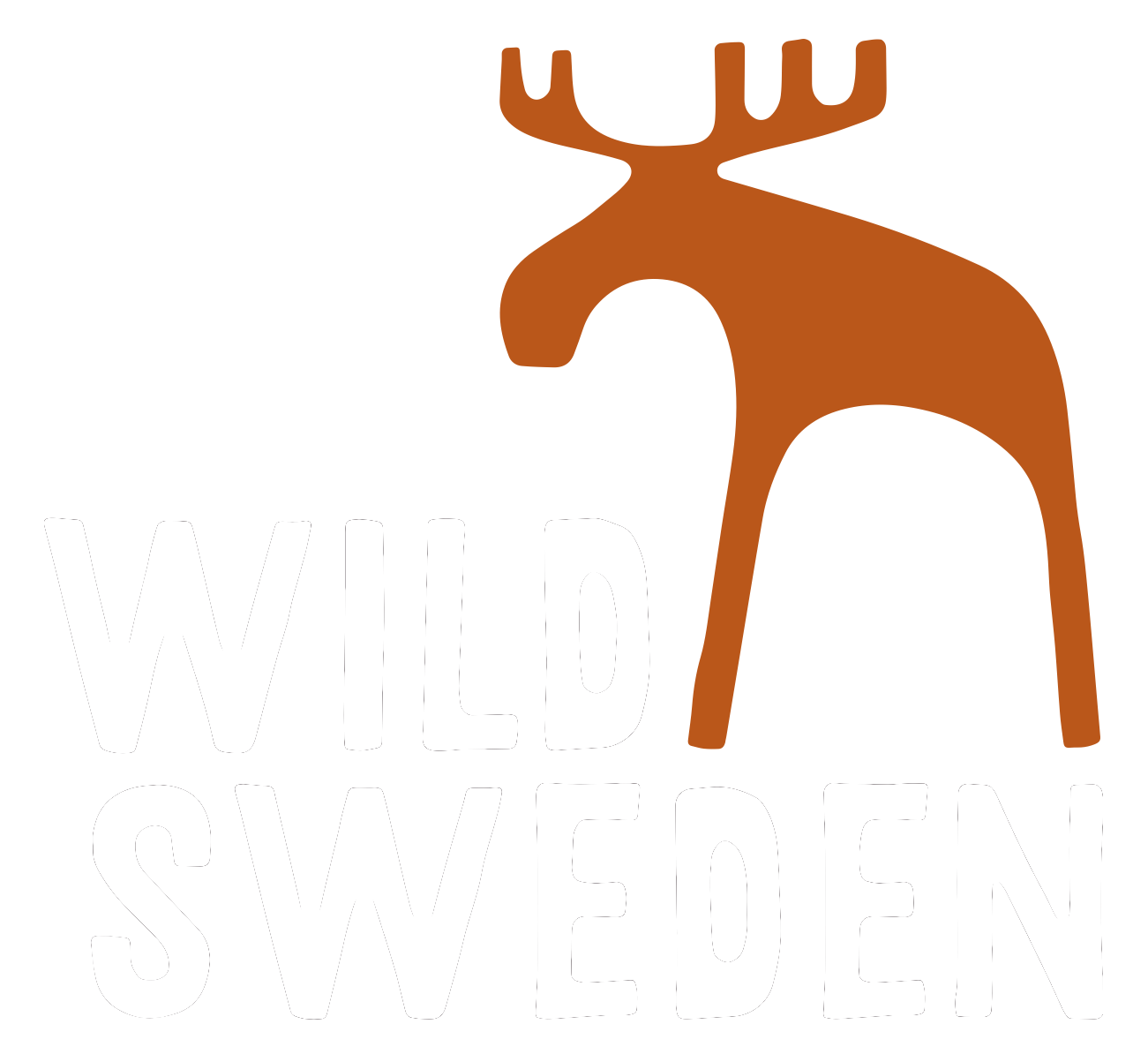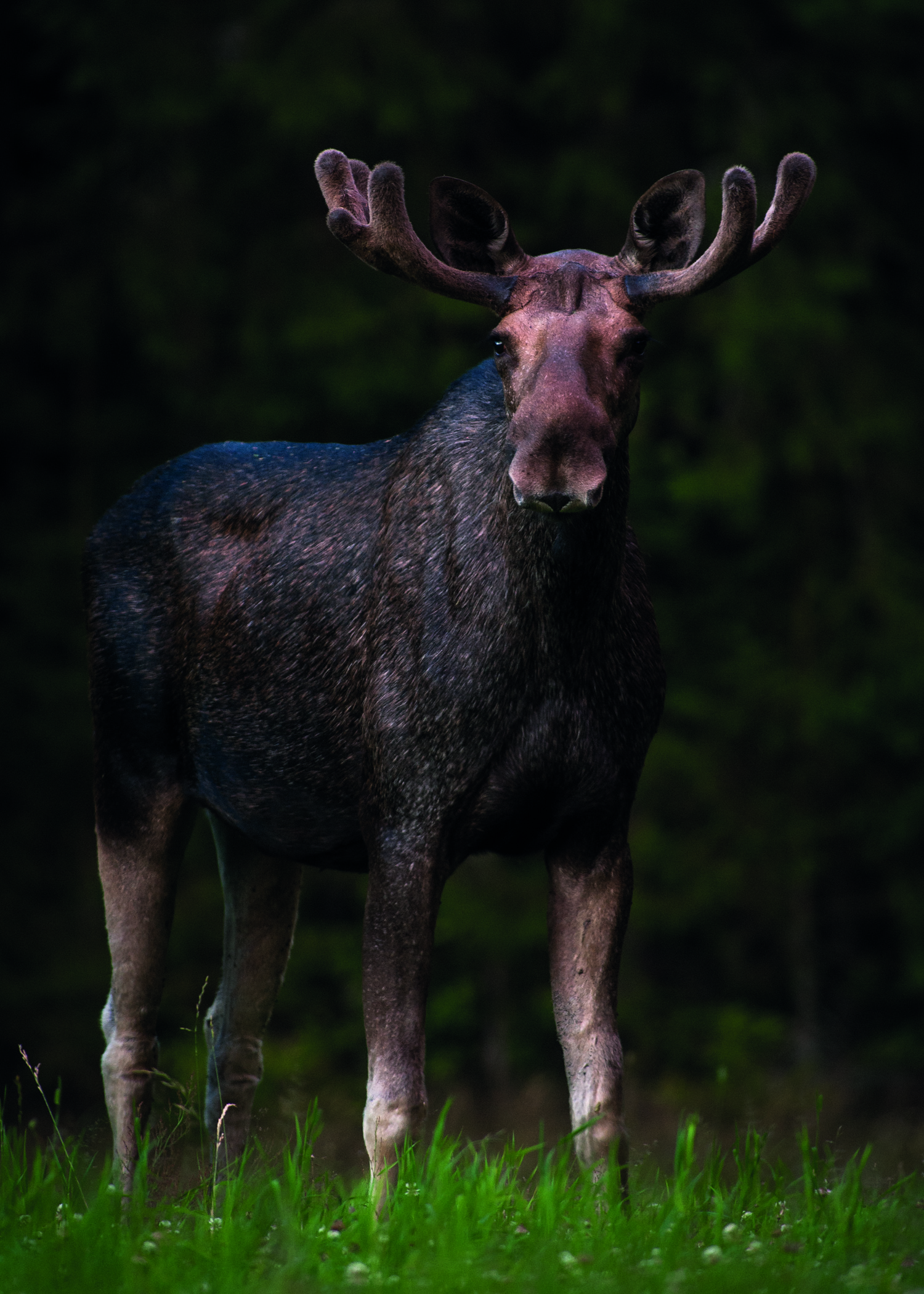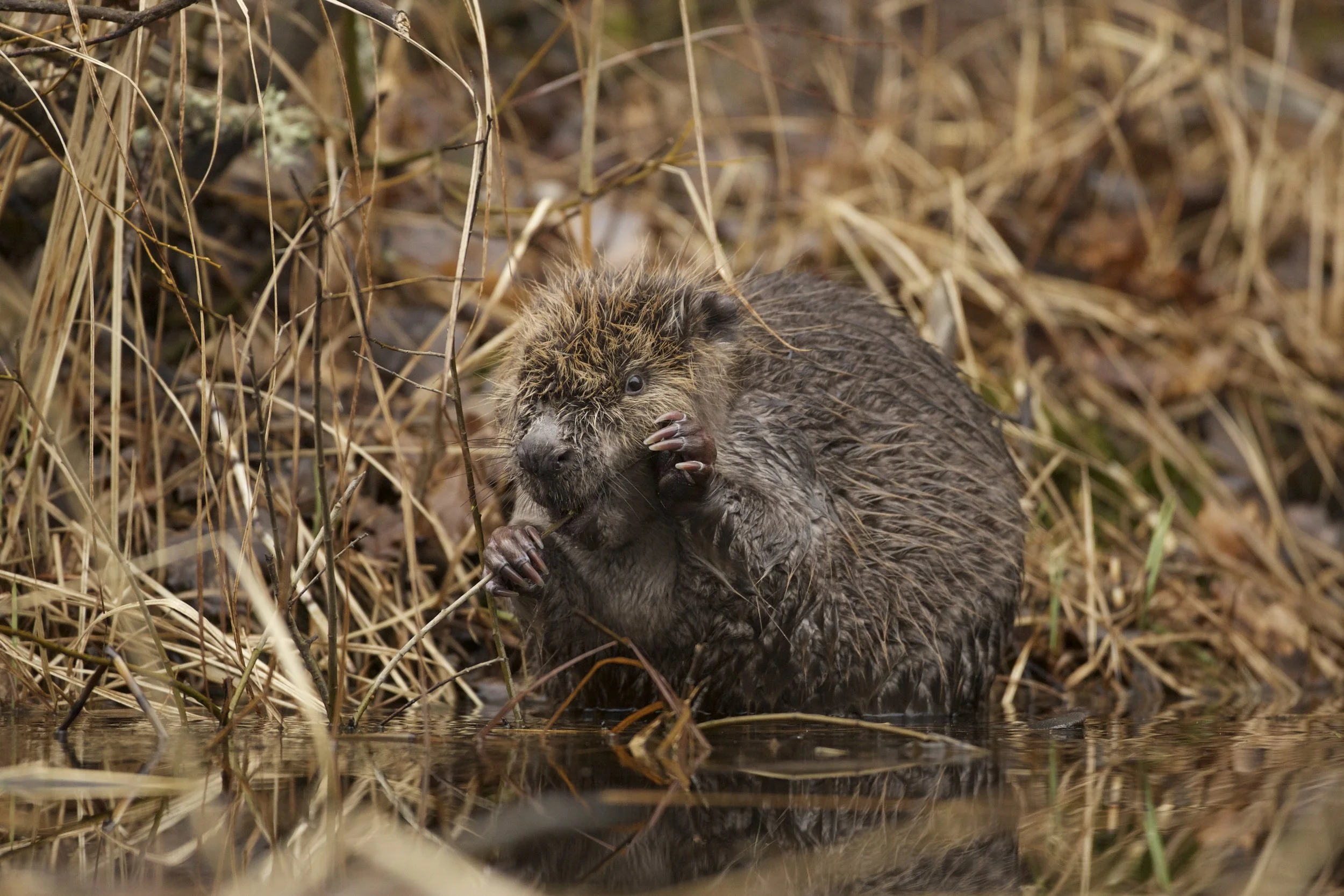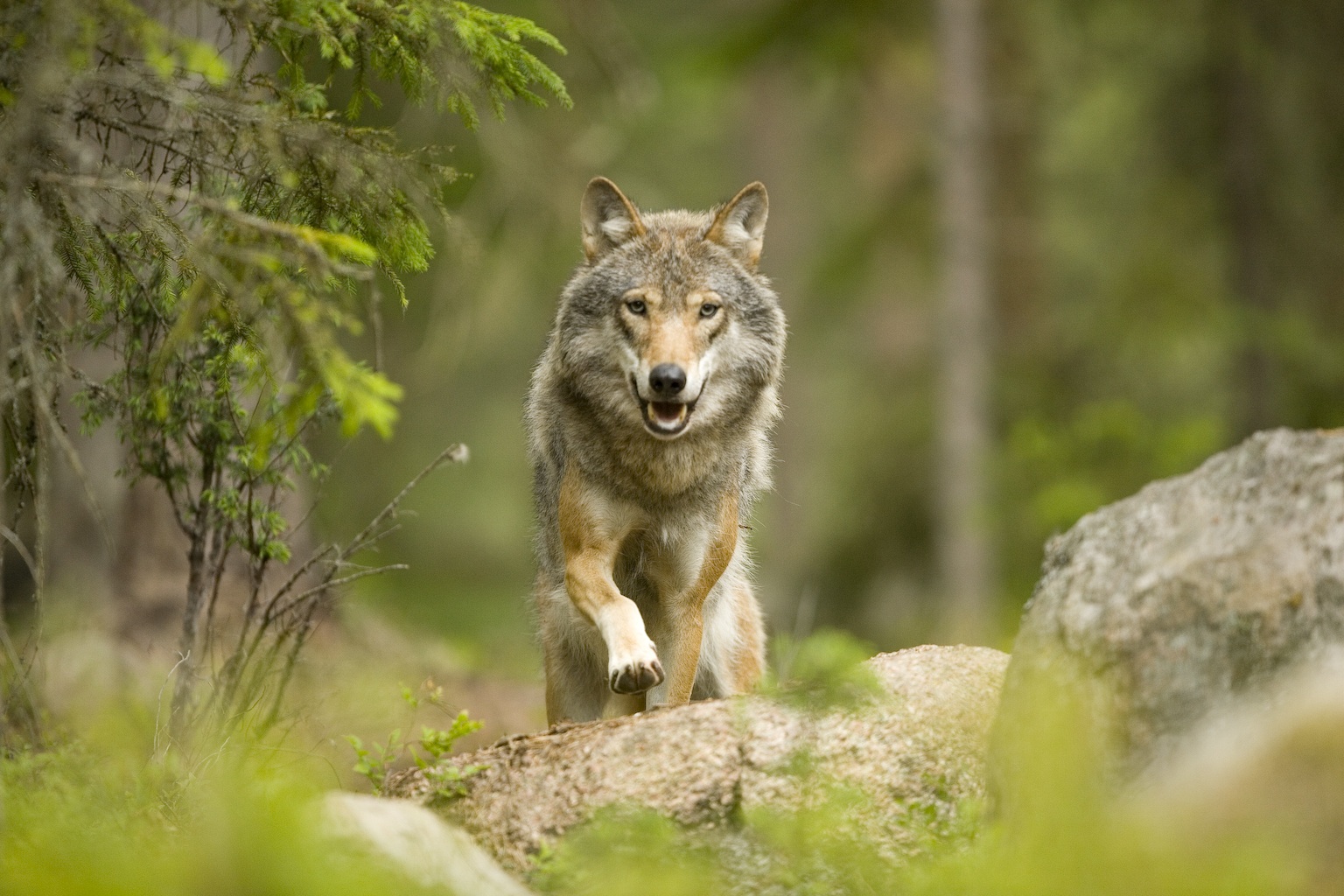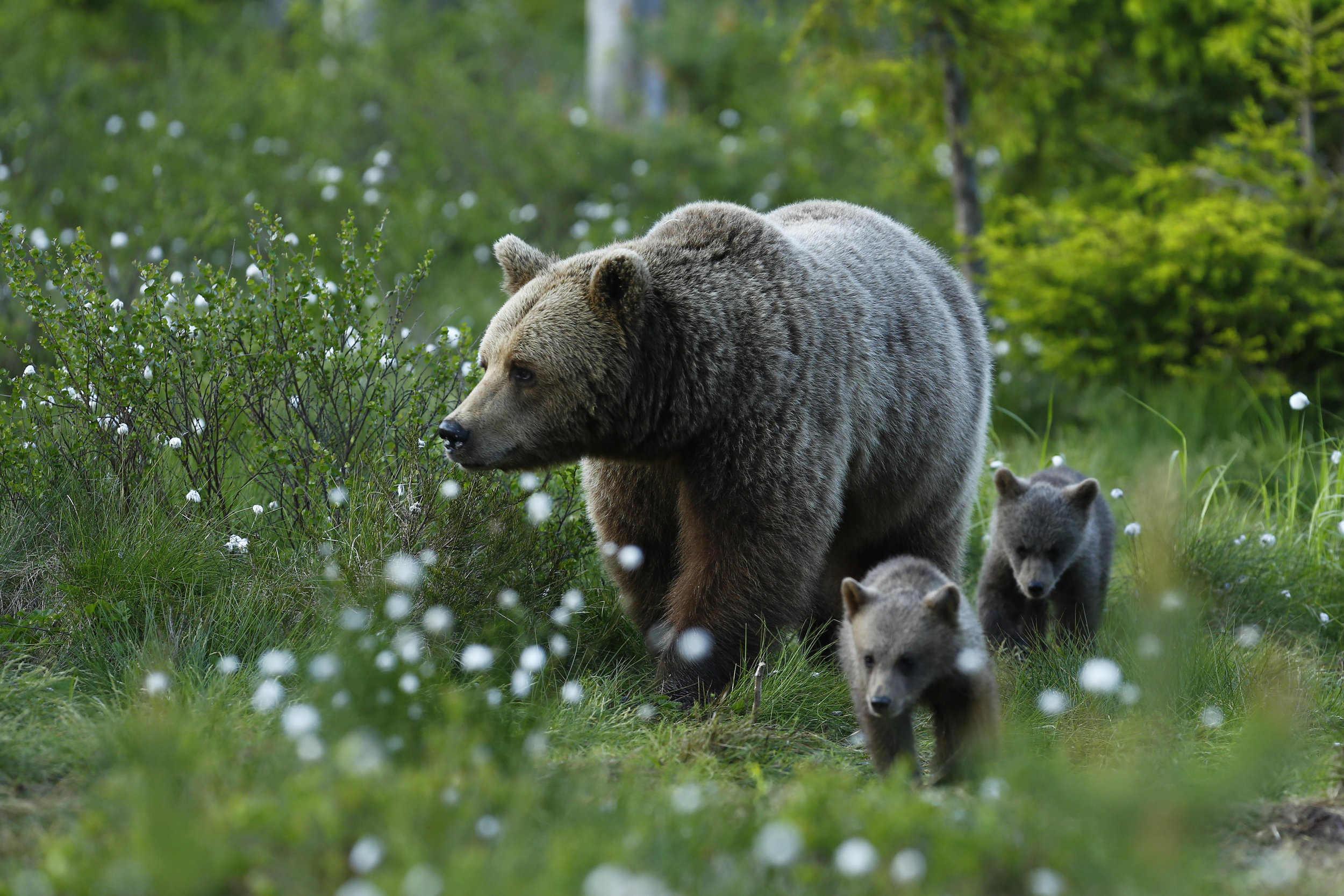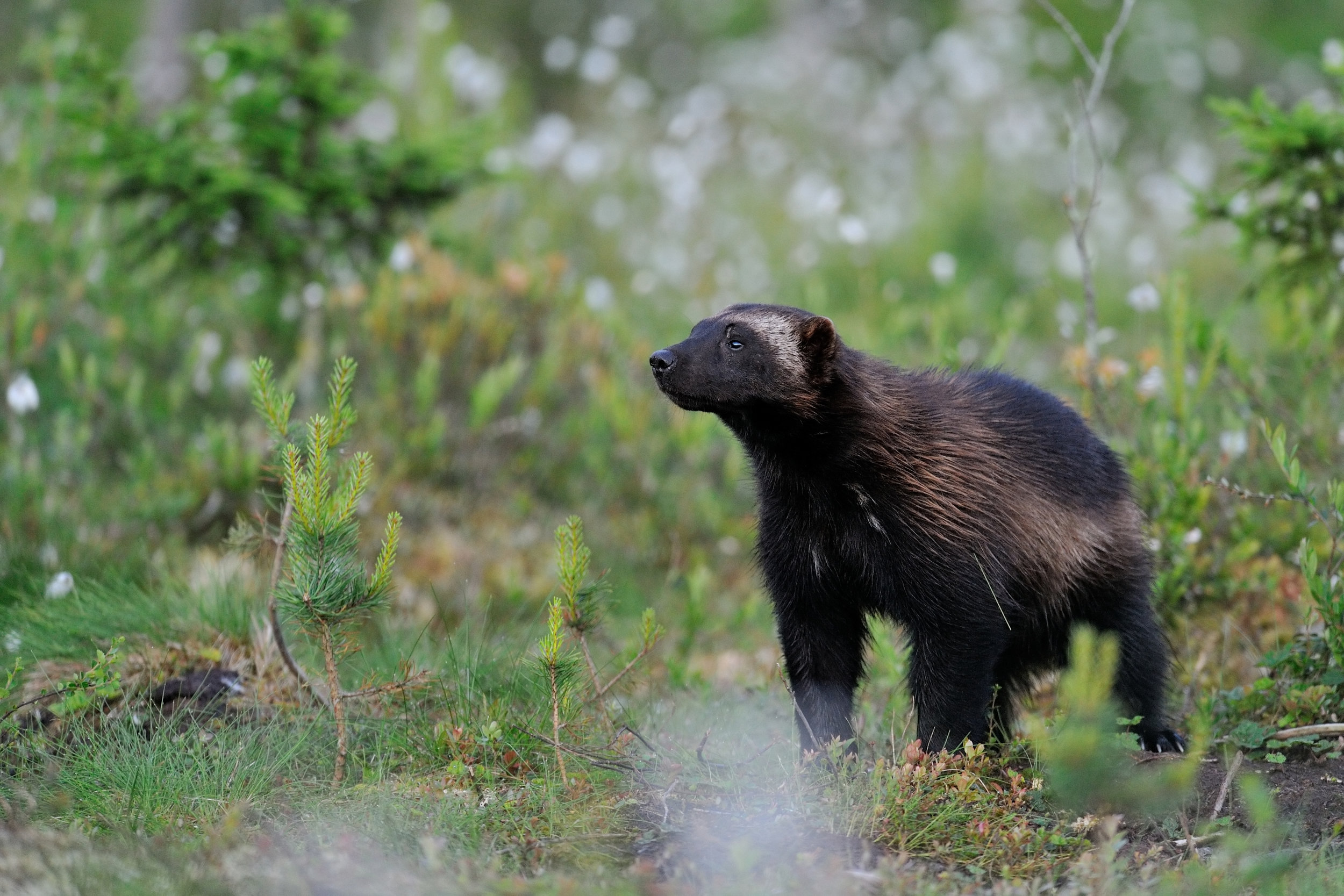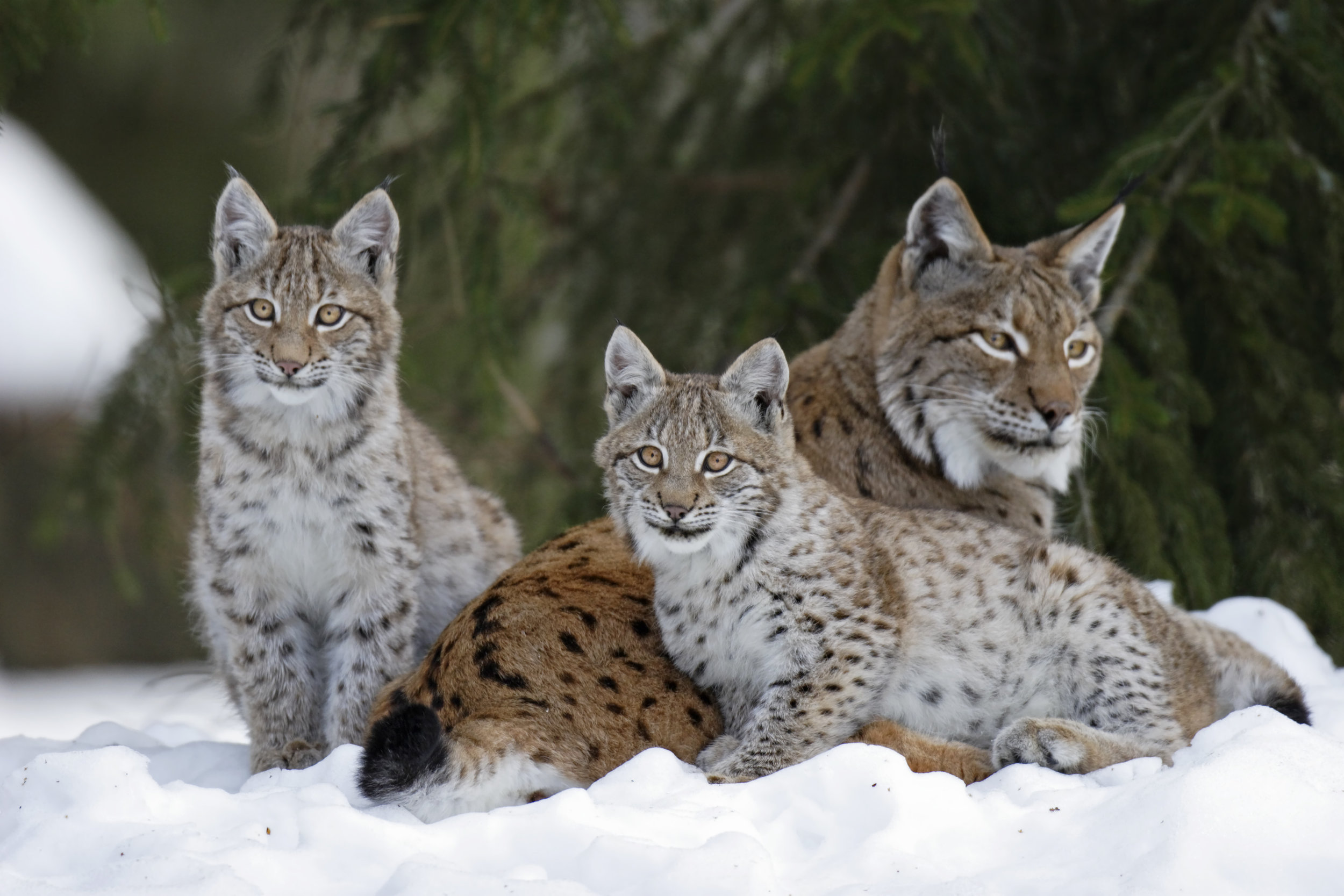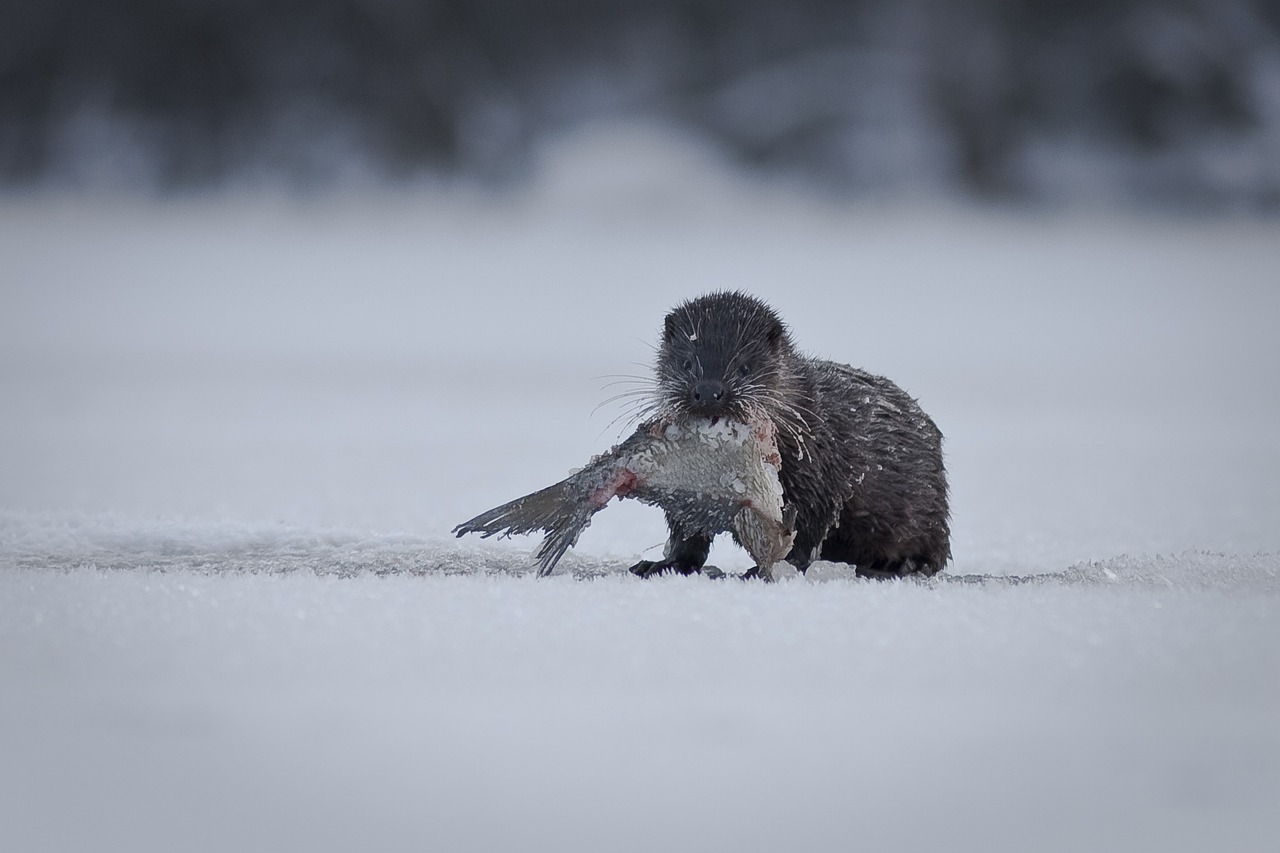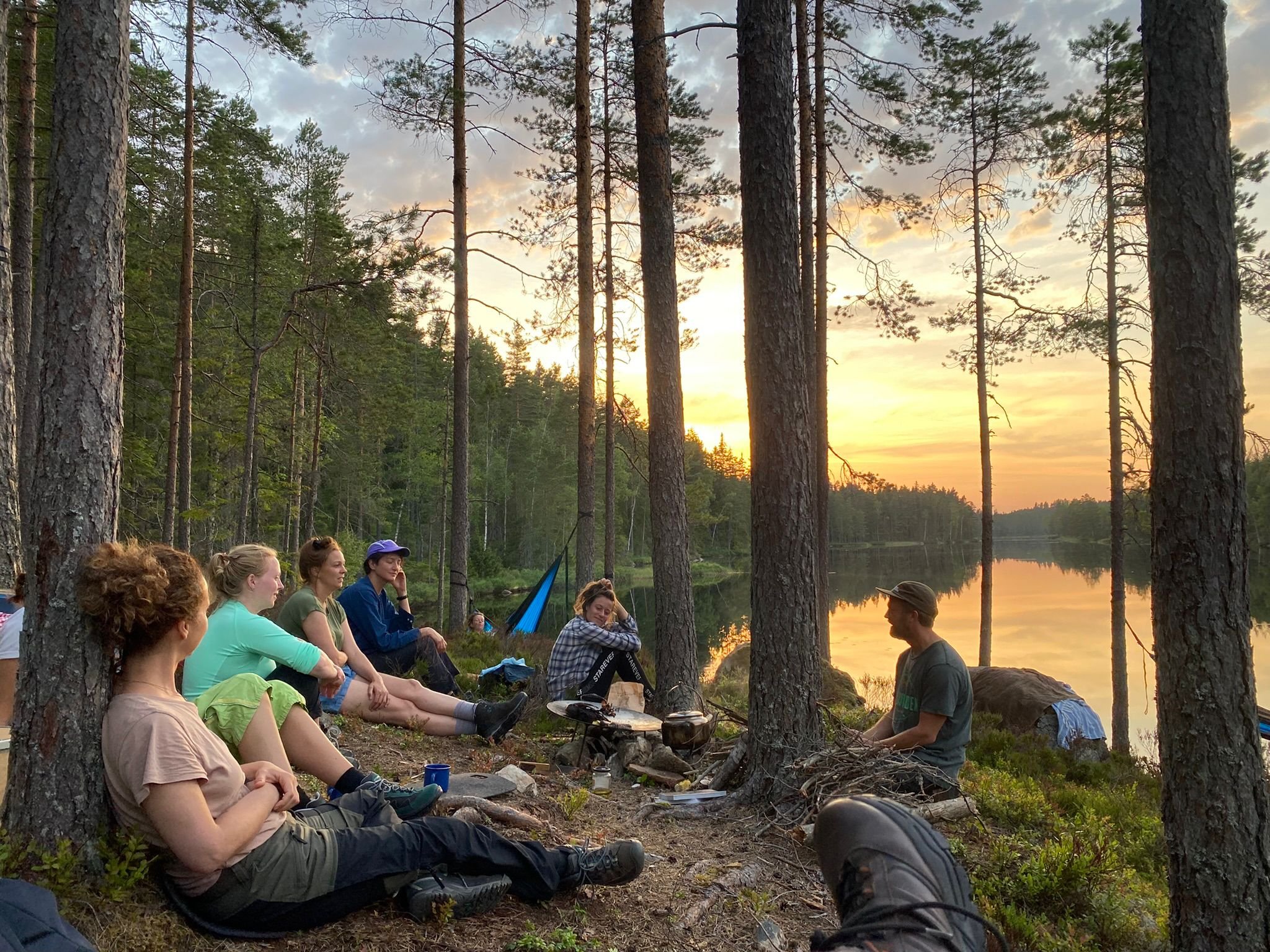Wild animals in Sweden and where to see them
In this article, we'll take a closer look at some of the fascinating wild animals that call Sweden home. From majestic moose and fearsome brown bears to cute Arctic Fox and funny Otters, Sweden is a haven for nature lovers and wildlife enthusiasts.
This is a list of ten wild animals in Sweden and where to see them.
Let’s begin with Moose!
Photo of Moose in Sweden: Marie Mattsson
Moose in Sweden
The Moose is the largest species of deer family and can be found throughout Sweden except on Gotland and the outer islands.
Moose have a diet that includes both terrestrial and aquatic vegetation. Unlike most other deer species, they are solitary animals and do not form herds. During their first year, the calves stay with their cow.
Moose are not always easy to find. If you are traveling through Sweden, do not expect to see Moose everywhere. Your best chance of spotting them is from your car window, but encountering a Moose while walking through a forest is much more impressive.
How to see moose in the wild
Here are some tips on how to see moose in the wild.
Drive around open areas. During the summer, Moose venture out into open areas such as fields and meadows in search of food. This increases your chances of seeing them, especially during the evening.
Walk silently while hiking: If you prefer hiking, be prepared to walk for several days before you spot a Moose. Remember to walk in silence to avoid scaring them away.
Look near villages and towns: Moose that live close to villages and towns are used to people and are therefore less shy. You do not have to venture deep into the forest to spot them.
Join a guided Moose Safari: If you want to ensure that you see a Moose, join a guided tour to see Moose in the wild. Experienced guides can take you to the best spots to see these majestic creatures.
Facts about Moose in Sweden
Scientific name: Alces alces
Height: 170 – 210 cm (at shoulder)
Weight: 200 – 360 kg (female), 380 – 850 kg (male)
Lifespan: 12 – 25 years (but most are shot at early age)
Population in Sweden: The Summer population is estimated to be 300,000–400,000 moose. Around 80,000 are hunted each Autumn.
Natural predators: Man (hunting + traffic) Wolf, Brown Bear.
Photo of Beaver in Sweden: Anders Öhlund
Beavers in Sweden
Beavers can be found in most rivers and lakes in central Sweden, but are less common in the northern parts of the country and south of Stockholm. Look for their characteristic gnaw marks on trees, especially aspen and birch, to find out if they are in the area.
Beavers are nocturnal and live close to water, so searching for them near a lake, river, or stream is the best option. To get closer without disturbing them, try approaching in a boat. Wait near their lodge at sunset and be patient for the best chance to see them. Dusk and dawn are when beavers are most active.
You can also join a guided tour to see Beavers in the wild.
Facts about Beavers in Sweden
Scientific name: Castor fiber
Weight: 11 – 30 kg (Adult)
Body length: 80 – 100 cm (without tail)
Tail length: 25 – 50 cm
Lifespan: 16 – 24 years
Population in Sweden: The population is estimated to be at least 150,000.
Natural predators: Man (hunting + traffic), Wolf, Lynx
Photo of Wolf in Sweden: Glenn Mattsing
Wolves in Sweden
The Scandinavian Wolf population is mainly concentrated in the southern central parts of Sweden, specifically in the counties of Västmanland, Örebro, Värmland, Dalarna, and Gävleborg. Wolves are rarely found in the northern half of Sweden or in the southern regions.
Seeing Wolves in Sweden can be a challenging task as they are elusive and well-camouflaged. They tend to reside in dense forests, making it hard to spot them even if they are nearby. Additionally, Wolves travel long distances each day, making it difficult to track their movements. Instead of seeing a Wolf, hearing their distinctive howl may be more likely and just as rewarding.
Joining a professional Wolf tracker for a guided tour in a Wolf territory can increase your chances of experiencing this unique encounter.
Facts about Wolves in Sweden
Scientific name: Canis lupus
Height: 80 – 90 cm (at shoulder)
Weight: 35-45 kg (female), 45-55 kg (male)
Body length: 140-180 cm (with tail, male), 140-165 cm (with tail, female)
Tail length: 50 cm (male), 35-40 cm (female)
Population in Sweden: The population is estimated to be 400 – 500 (Winter 2014/2015).
Predators: Man (hunting + traffic), other Wolves
Photo of Brown Bear female with two cubs: Håkan Vargas
Bears in Sweden
Bears are predominantly found in the northern two-thirds of Sweden, with the central regions of Dalarna, Gävleborg, and Jämtland having the highest population densities of bears in Sweden.
The Swedish Brown Bear population has grown to a number of at about 2800 individuals, distributed across the central and northern parts of Sweden.
If you wish to see bears in Sweden, it can be quite challenging, as European Brown Bears are timid, peaceful, and elusive in the wild. Some people are fortunate enough to spot bears as they graze on grass and herbs in open meadows and fields during May and June, prior to the berry season. Others may encounter bears in the mountains as they forage for berries during late summer and fall.
Your best bet for increasing your chances of seeing bears in the forest is to go with a professional wildlife tracker. These Brown Bear watching tours provide you with an excellent opportunity to observe and photograph bears in their natural habitat.
Bears are very shy and do not attack people, but should be respected and kept at a distance.
Facts about Bears in Sweden
Scientific name: Ursus arctos
Height: 100 – 280 cm, up to 135 cm to the shoulder
Weight: 60 – 100 kg (female) 100 – 250 kg (male)
Lifespan: 20 – 30 years
Hibernation period: October/November – April/May
Mating period: May – June
Breeding period: January – February
Photo of an Arctic Fox in Sweden by Nicolas Néreau
Arctic Fox in Sweden
The mountains of North-Western Sweden, particularly in the alpine areas of Jämtland, Västerbotten, and Norrbotten, are home to Arctic Foxes.
If you want to catch a glimpse of the Arctic Fox in Sweden, be prepared to venture into remote areas that are not easily accessible by car. However, there are a few hotspots worth mentioning. For instance, the Helags mountains in Härjedalen are a great place to see Arctic Foxes, and the Helags mountain station offers guided tours to watch them at their dens.
Another location to consider is Stekenjokk, situated between Jämtland and Västerbotten. During the summer months, you can drive across this region on the Wilderness Road to search for Arctic Foxes and other wildlife.
It has a deep thick fur and is well adapted to living in Arctic environments. They form monogamous pairs during the breeding season and usually stay together in family groups of multiple generations in complex underground dens.
Facts about Arctic Foxes in Sweden
Scientific name: Vulpes lagopus
Length: 50 – 85 cm (plus tail 25-50 cm)
Weight: 3 – 8 kg
Lifespan: about 5 years
Population in Sweden: A few hundred. The Arctic Fox population has increased lately but varies greatly from season to season depending on access to food which mainly consists of lemmings and other rodents.
Natural predators: Red fox.
-
The arctic fox is also known as the white fox, polar fox, or snow fox.
-
Arctic Fox comes in two different color variations, one called white and one called blue. The white variation is white in Winter and grey with brown back, legs and face in Summer. The blue variation has a blueish-gray fur throughout the year. Both colour variations can exist in the same litter if the parents have genes for both. The white foxes are well camouflaged against the snow and therefore better adapted to survive. Most of the Arctic Fox in Sweden are of the white variation.
Photo of a Wolverine by Erik Mandre
Wolverines in Sweden
The Wolverine, which is perhaps the least known mammal in Sweden, can primarily be found in remote areas of Sweden's mountainous regions, such as Norrbotten, Västerbotten, Jämtland, as well as further south in the forested regions of Dalarna and Hälsingland.
If you want to see Wolverines in Sweden, be prepared for a challenge. Most people spot them from a distance by chance while skiing or snowmobiling in the mountains during winter, when they are easier to spot against the snowy white background. Bringing binoculars will help.
In recent years, the Wolverine population has grown and also spread southeast to forested areas in central Sweden, such as Gävleborg and Dalarna. One of the southernmost populations of Wolverines is located in Gyllbergen, Dalarna. This may be thanks to the comeback of Wolves who leave plenty of leftovers for Wolverines and other carnivores.
The wolverine is the largest terrestrial member of the weasel family. It is a larger cousin to otters, weasels and mink. The wolverine has a broad head, small eyes and short rounded ears with dark brown fur, and often has a lighter-colored face mask and stripe running down both sides of its body. The wolverine is powerfully built and has short legs with wide feet for traveling across the snow. The wolverine is a good tree climber and also a good swimmer.
Female wolverines give birth during winter in dens that provide security and a buffer to cold winter temperatures. These dens are generally tunneled through snow and are associated with uprooted trees, avalanche debris, and boulders, often in remote alpine cirques above tree line.
Facts about Wolverines in Sweden
Scientific name: Gulo gulo
Length: 95 – 100 cm
Height: 40 cm (at the withers)
Weight: 12 – 18 kg (male), 8 – 12 kg (female)
Lifespan: 10 – 12 years
Population in Sweden: An estimated 600-700 individuals. The population has grown in recent years and also spread South to forested areas in Central Sweden like Gävleborg and Dalarna.
Natural predators: Man (protective and illegal hunting)
-
The Wolverine has a reputation for being aggressive and greedy, but it is actually quite a bad hunter. Wolverines are opportunistic feeders which means they eat a variety of foods depending on availability. They primarily scavenge dead animals. However, they do take down animals much larger than themselves, including Reindeer, when snow conditions are in their favor.
-
Wolverines are territorial animals and defend large, gender-exclusive territories. Male and female territories overlap each other, and they have strong family bonds. Young wolverines are called cubs or kits. The cubs keep to the mother until spring arrives the year after they were born. A male wolverine will interact with his cubs even after they have struck out on their own.
Lynx family in Sweden
Lynx in Sweden
Lynx is perhaps the most difficult mammal to spot in Sweden. Few people ever get to see a Lynx in the wild.
Good news is that Lynx can be found all across Sweden. Some of the more densely populated areas are actually around Stockholm in Sörmland and Uppland and in Bergslagen.
How to see Lynx in Sweden: Lynx are most active around dawn and dusk, especially during early mornings. That’s also when most people tend to see them. If you walk through the forest and a Lynx sees you as a threat, the Lynx will likely climb a tree and wait for your to pass by. So it may be a good idea to look upwards once in a while as you stroll through the woods. But driving around peering across fields and meadows around sunrise is probably your best bet.
Facts about Lynx in Sweden
Scientific name: Lynx lynx
Length: 90 – 110 cm
Height: 60 – 75 cm (at the withers)
Weight: 20 – 28 kg (male), 15 – 20 kg (female)
Lifespan: 10 – 14 years
Population in Sweden: An estimated 1250 individuals.
Natural predators: Man (hunting + traffic)
The Lynx is the largest cat animal in Europe and the third largest predator in Sweden after the Brown Bear and Wolf. It is the largest of the four lynx species in the World.
It is a strict carnivore, consuming one or two kilograms of meat every day. This extremely efficient hunter uses fine-tuned techniques to bring down animals even larger than its own size, delivering a fatal bite to the neck or snout of an unsuspecting deer. In Northern Sweden Reindeer is their main prey while Roedeer is their main prey in the South.
The Lynx has powerful legs, with slightly longer hind limbs adapted for springing. The large ears are adorned with conspicuous black tufts, and the long cheek hair hangs down to form a facial ruff, appearing almost mane-like in winter. The coat is long and extremely dense, especially over the winter, and is more variable in colouration than in any other felid.
The Lynx males are inhabiting large home ranges, within which one or more females reside. While female territories tend to exhibit little overlap, male territories often overlap to some extent, although males normally avoid each other. The lynx uses various scent marks, including urine, faeces and scrapes to mark territory and also to communicate with neighbours.
During mating season, usually by mid-March, both the males and females call to each other frequently.
Towards the end of the gestation period, which lasts 67 to 74 days, the female finds a sheltered den to give birth to 1 – 4 kittens. At three months old the young are weaned and begin to accompany the female, eventually leaving just before the next mating season.
Wild Boar sow with piglets, in Sweden
Wild Boar in Sweden
Wild boar or Wild pig are two names for the same species.
Wild boar can mainly be found in the Southern parts of Sweden. You can find more or less dense populations of Wild Boar in the Stockholm area and all the way down to Skåne. Södermanland is a good place to go if you want to see them in the wild.
How to see Wild Boar in Sweden: Wild boar are shy creatures and rarely seen in daylight. Dusk and dawn offer the best chances to see them as they visit fields and meadows in search of food. Boars remain hidden in the protective vegetation during the day.
Facts about Wild Boar in Sweden
Scientific name: Sus scrofa
Weight: 80 – 175 kg (Adult)
Body length: 55 – 100 cm
Lifespan: 15 – 20 years
Population in Sweden: The population is estimated to be at least 300,000.
Natural predators: Man (hunting + traffic), Wolf
After two hundred years of absence the Wild Boar has made a strong return into the Swedish fauna. The species has a long history in Sweden which began more than 8,000 years ago. Wild boar was hunted to extinction, but was reintroduced in captivity. After several escapes during the 1970’s – and 1980’s, the wild population has increased in various parts of southern Sweden and is now estimated to over 300,000. The population is still growing at a fast rate as they populate new regions of Sweden at a steady pace.
An adult boar is about 1 meter in height and just over 1.5 meters long. The sow (female) usually weigh over 100 kg, while the boar (male) is heavier and can weigh over 200 kg.
The tusks in the lower jaw are sharp and shaped for grazing. These teeth are less developed in sows and piglets. The tusks have open roots, ie they grow throughout the animal’s lifetime.
The Wild Boar are social animals and live in groups of sows with piglets. They usually live in groups of between 6 and 20 individuals, although larger herds have been seen. When a female piglet reach the age of one and new piglets are born, they leave the sow and form their own groups. They can later rejoin the original group – with or without their own piglets – and thus form even larger flocks. The group is led by the oldest sow. This dominant sow leads hikes, decide where to search for food and protects the offspring. Male boars that are older than two years live as loners except during mating season.
Most matings occur in August to December. Swedish research has shown that about 85% of births take place during the months of February to May, but piglets can be born at any time of the year. Their data also suggest a small birth peak in August-September. In most cases, the sow gives birth to only one litter in a year. The size depends in part on the sow’s age. A young sow gives birth to an average of 3-4 piglets, while one who has reached the age of three breeds 5-6 and sometimes more.
Boars are omnivorous, but most of the feed (about 90%) consisting of vegetables. Although it primarily feeds on fruits, seeds and roots, the Wild Boar eats a wide range of foods including some animal matter and scavenging from roadkills and the Wolves’ leftovers.
In some areas, they cause damage to trees and crops. But their rooting also favor the spread of many plant species and may lead to more rapid nutrient cycling in forest soils.
Otter in Sweden
Otters in Sweden
Want to see an Otter? They’re great little creatures!
Most Otters live by the rivers in Northern Sweden, but the population is also increasing in the South. Most otters live near fresh water, but can also live in marine environments along the coast.
A known hotspot for Otters in the wild is at Gysinge bruk by river Dalälven in Färnebofjärden National Park where you may be lucky to see them playing on the ice during Winter. As with most mammals they are mainly active at dusk and dawn.
Facts about Otters in Sweden
Scientific name: Lutra lutra
Weight: 3 – 11 kg
Body length: 50 – 100 cm + tail 28 – 55 cm
Lifespan: Up to 22 years
Population in Sweden: 1500 – 2000
Threats: Chemicals, traffic
An adult female Otter weighs between 5 – 6 kg, an adult male weighs about twice as much. Males are about 1 meter long and the females around 90 centimeters, with the tail.
It has a sleek brown fur, which is often paler on the underside, and a long body with a thick tail and short legs. Adaptations for an aquatic lifestyle include webbed feet, the ability to close the small ears and the nose when under water, and very dense, short fur which traps a layer of air to insulate the body. Many sensitive hairs frame the snout which help the otter to locate prey.
Otters feed mainly on fish, but frogs are also an important food source. They can also eat crayfish, birds and small mammals.
The otter have a rich social life and is often playful.
Breeding can occur throughout the year; one or two cubs are usually born in a den known as a holt, and ten weeks later the cubs emerge above ground with their mother. Female Otters care for their offspring for about a year. but it may take the cubs up to 18 months to learn to fish, and females have ben observed helping this learning process by releasing live fish for the cubs to re-catch.
The Swedish Otter population is rising again after it was close to extinction in the 1950’s, which was probably due to environmental toxins and especially PCBs. It is now recovering and increasing in numbers. The population in Sweden is estimated to 1500 – 2000 individuals. Today, traffic is a bigger problem.
The complete list of mammals in Sweden
Carnivores
Eurasian Lynx Lynx lynx
Arctic Fox Alopex lagopus
Red Fox Vulpes vulpes
Grey Wolf Canis lupus Facts about Wolf
Brown Bear Ursus arctos
Stoat Mustela erminea
Least Weasel Mustela nivalis
European Polecat Mustela putorius
Pine Marten Martes martes
Wolverine Gulo gulo
Eurasian Badger Meles meles
European Otter Lutra lutra
Grey Seal Halichoerus grypus
Common Seal Phoca vitulina
Ringed Seal Pusa hispida
Deer & Wild Boar
Red Deer Cervus elaphus
Fallow Deer Dama dama
Reindeer Rangifer tarandus
Moose/Elk Alces alces Facts about Moose
Roedeer Capreolus capreolus
Wild Boar Sus scrofa
Rodents
European Beaver Castor fiber
Eurasian Red Squirrel Sciurus vulgaris
Hazel Dormouse Muscardinus avellanarius
Northern Birch Mouse Sicista betulina
Water Vole Arvicola terrestris
Bank Vole Clethrionomys glareolus
Grey Red-Backed Vole Clethrionomys rufocanus
Northern Red-backed Vole Clethrionomys rutilus
Norway lemming Lemmus lemmus
Field Vole Microtus agrestis
Tundra Vole Microtus oeconomus
Wood Lemming Myopus schisticolor
Yellow-necked Mouse Apodemus flavicollis
Wood mouse Apodemus sylvaticus
Harvest Mouse Micromys minutus
Hares and rabbits
European Rabbit Oryctolagus cuniculus
European Hare Lepus europaeus
Mountain Hare Lepus timidus
Schrews, Moles and Soledons
Eurasian Water Shrew Neomys fodiens
Common Shrew Sorex araneus
Laxmann’s Shrew Sorex caecutiens
Taiga Shrew Sorex isodon
Eurasian Least Shrew Sorex minutissimus
Eurasian Pygmy Shrew Sorex minutus
European Mole Talpa europaea
Bats
Bechstein’s Bat Myotis bechsteini
Brandt’s Bat Myotis brandti
Pond Bat Myotis dasycneme
Daubenton’s bat Myotis daubentonii
Barbastelle Barbastella barbastellus
Northern Bat Eptesicus nilssoni
Serotine bat Eptesicus serotinus
Common Pipistrelle Pipistrellus pipistrellus
Brown long-eared bat Plecotus auritus
Parti-coloured bat Vespertilio murinus
Whales
Harbour Porpoise Phocoena phocoena
